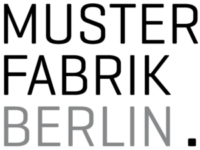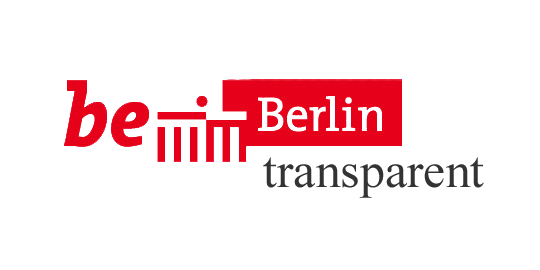Digital repositioning of an Offenburg glass mosaic
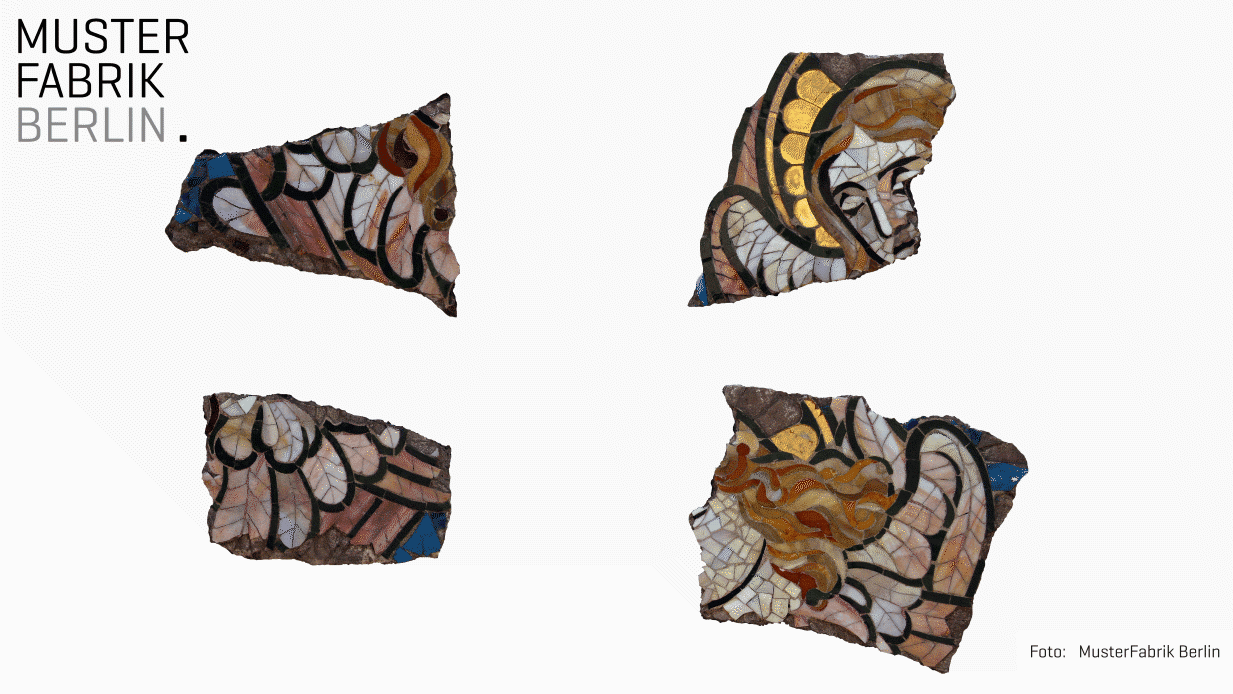
Buchholtz in Bredereiche, Fürstenberg/ Havel © MusterFabrik Berlin
Fragmented glass mosaic from the early 20th century
In 2010, fragments of glass mosaics from a chapel of a former hereditary burial ground, which is now a protected monument, were discovered in the village of Bredereiche in Brandenburg. It is an Offenburg glass mosaic, which was probably made in 1905/06 and which is unique in its kind. Before its destruction at the end of the Second World War, the complete mosaic picture covered about 17 m² of wall surface of the chapel spread over three walls.
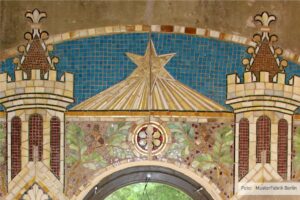
(approx. 1905/06) in the hereditary burial place Buchholtz in Bredereiche,
Fürstenberg/ Havel © MusterFabrik Berlin
Of the total of about 1,400 glass mosaic fragments, a few larger pieces could be assembled by hand. It became apparent that reconstruct the mosaic by hand is very time-consuming, logistically difficult to handle, and intellectually impossible in some cases. The steady accumulation of partial reconstructions requires very large work areas. Another complicating factor is that neither templates nor photos of the original mosaic image, which could be used as aids in manual puzzling, exist.
The development of a prototype assistance system for digital recovery
To support conservators and archaeologists in reconstruction work such as this, MusterFabrik Berlin has developed a novel automated 2.5-D scanner as part of a research and development project funded by Investitionsbank Berlin, as well as methods for the digital repositioning of multiply fragmented multidimensional objects in collaboration with the Fraunhofer Institute for Production Systems and Reconstruction Technology IPK. The glass mosaic fragments from Bredereiche served as reference material.
As part of the project, a 2.5-D scanner was constructed and prototyped on a laboratory scale by MusterFabrik Berlin. The scanner captures all information of a fragment relevant for digital reduction in one scan pass: the motif and the outline of the fragment, the outline of the motif as well as the plaster relief, i.e. the depth information of the fragment. The images taken are further processed using methods of image processing and pattern recognition. The methods enable characterization and classification of the glass mosaic fragments and thus form the basis for assistance-based puzzling.
The functionality of the prototypical assistance system which was also implemented within the project includes the pre-sorting of fragment parts based on various features, the calculation of puzzle suggestions and the digital merging of matching fragment pairs as well as the location or positioning of the merged fragments in a digital image of the wall surfaces.
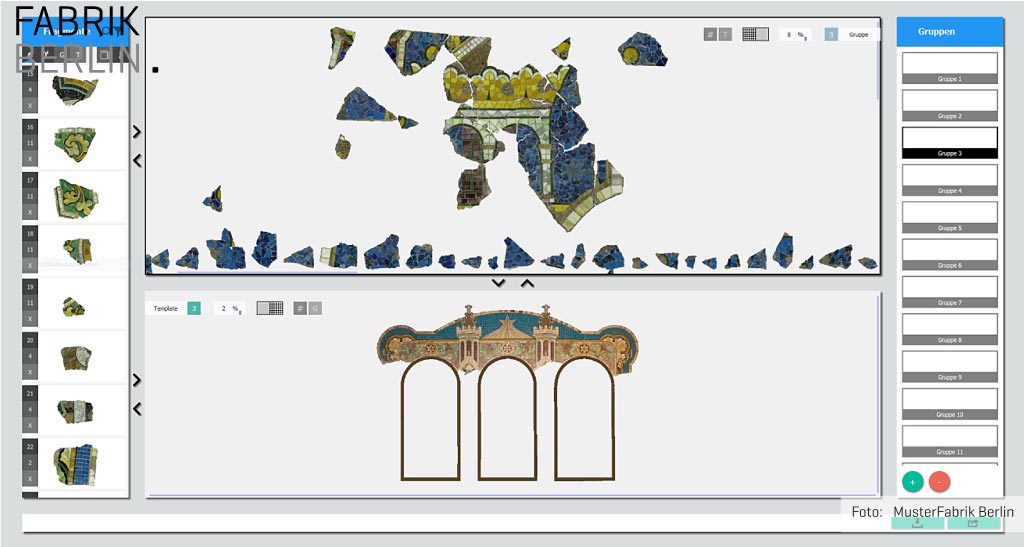
The result of the project is a powerful prototypical toolkit on a laboratory scale, which can be used in particular to restore cultural assets that are in danger of disappearing, even without the existence of an image of the objects to be reconstructed. Since the process of puzzling is initially purely digital, the usually fragile fragments are not subjected to undue stress during reconstruction. In the future, it is conceivable to generate a “construction manual” derived from the digital result, which conservators can use to reconstruct the real physical object.
More information about the project of digital reduction of “glass mosaic fragments”.
The project was realized with the help of financial support from the European Regional Development Fund (ERDF).
